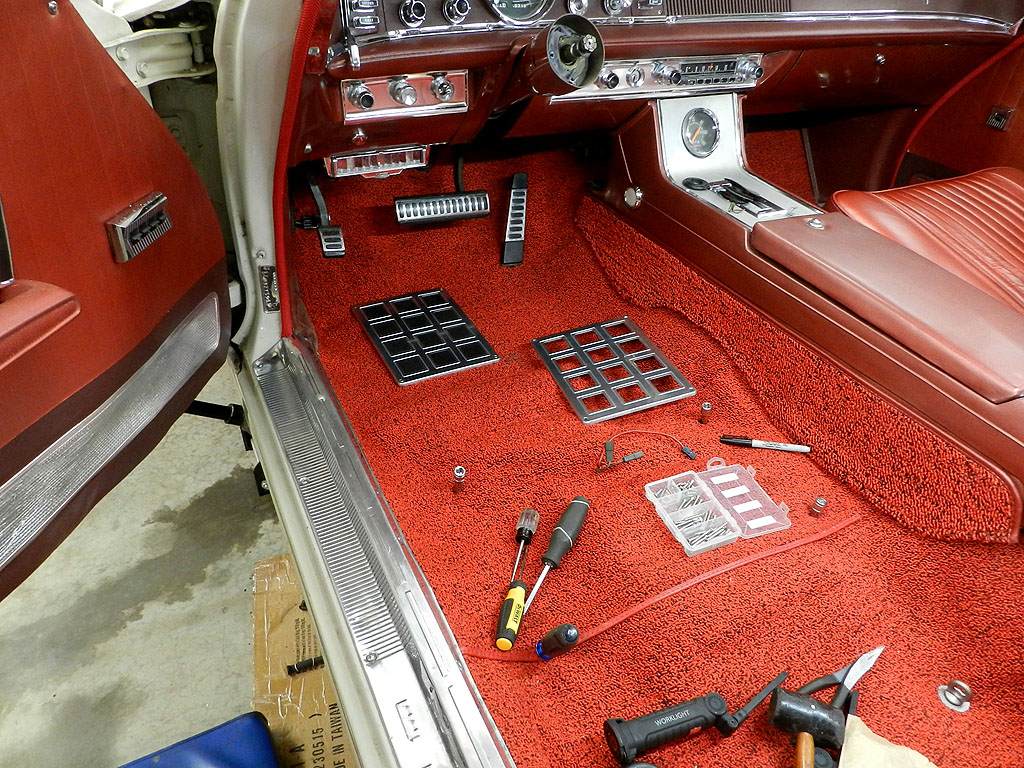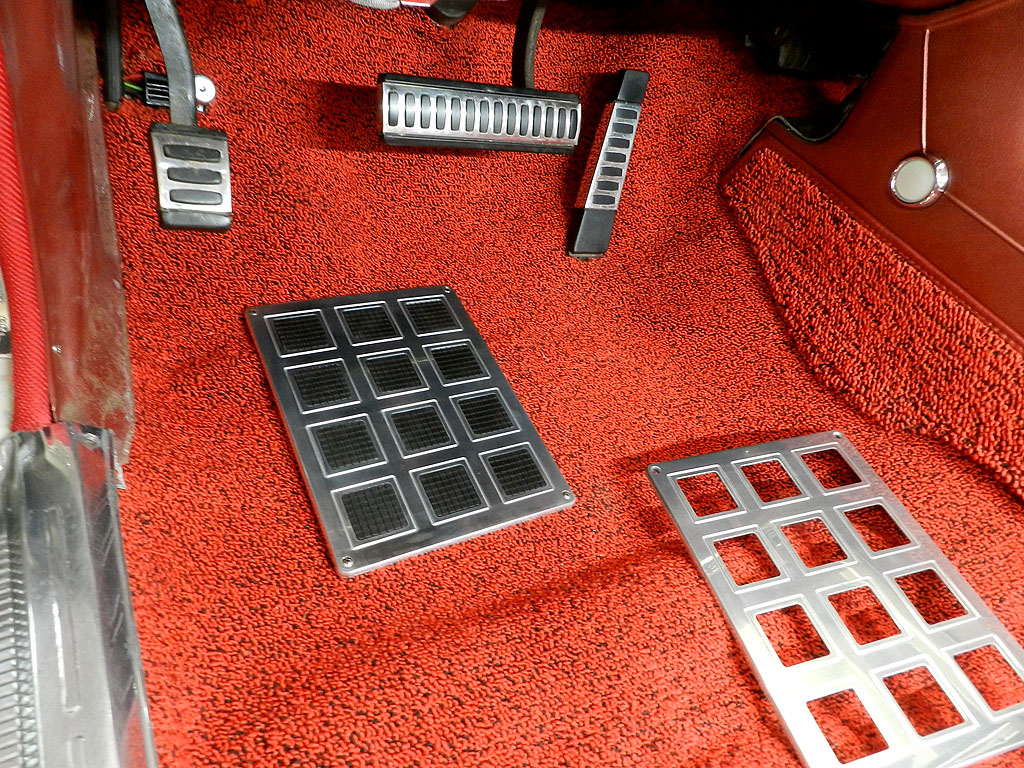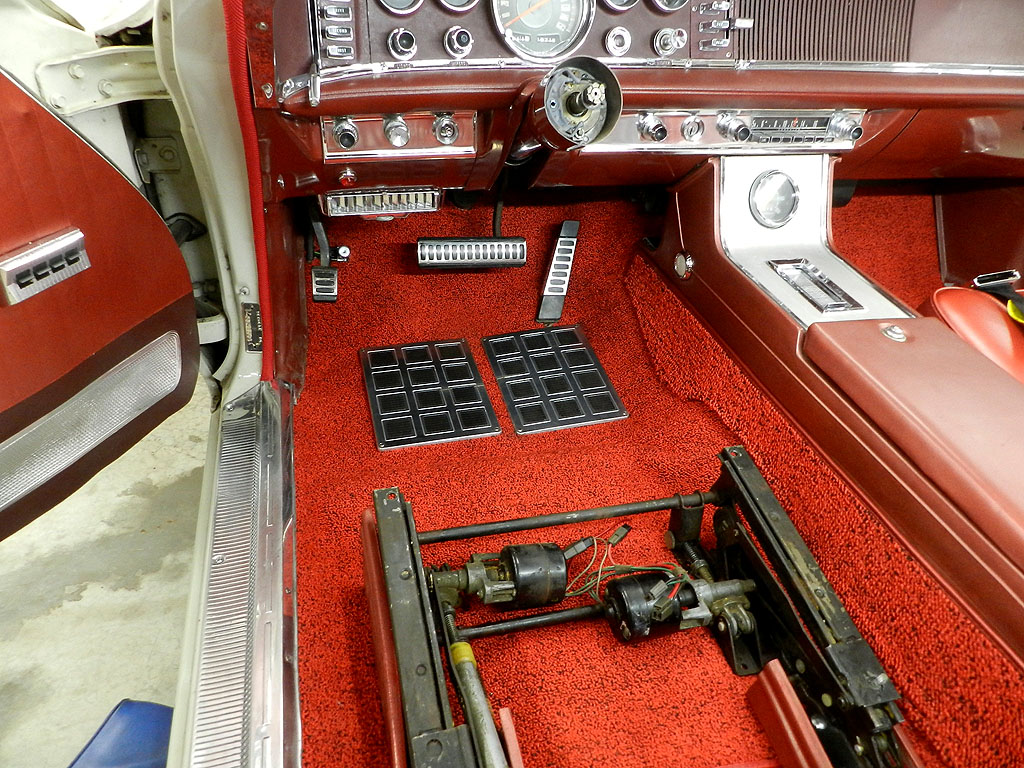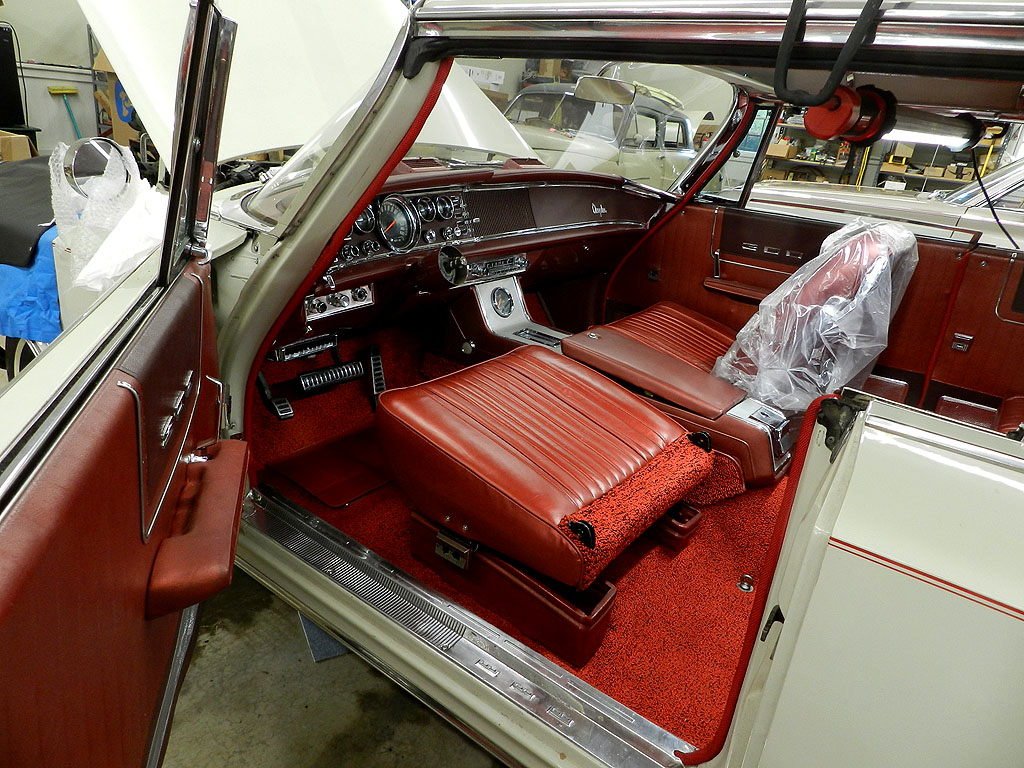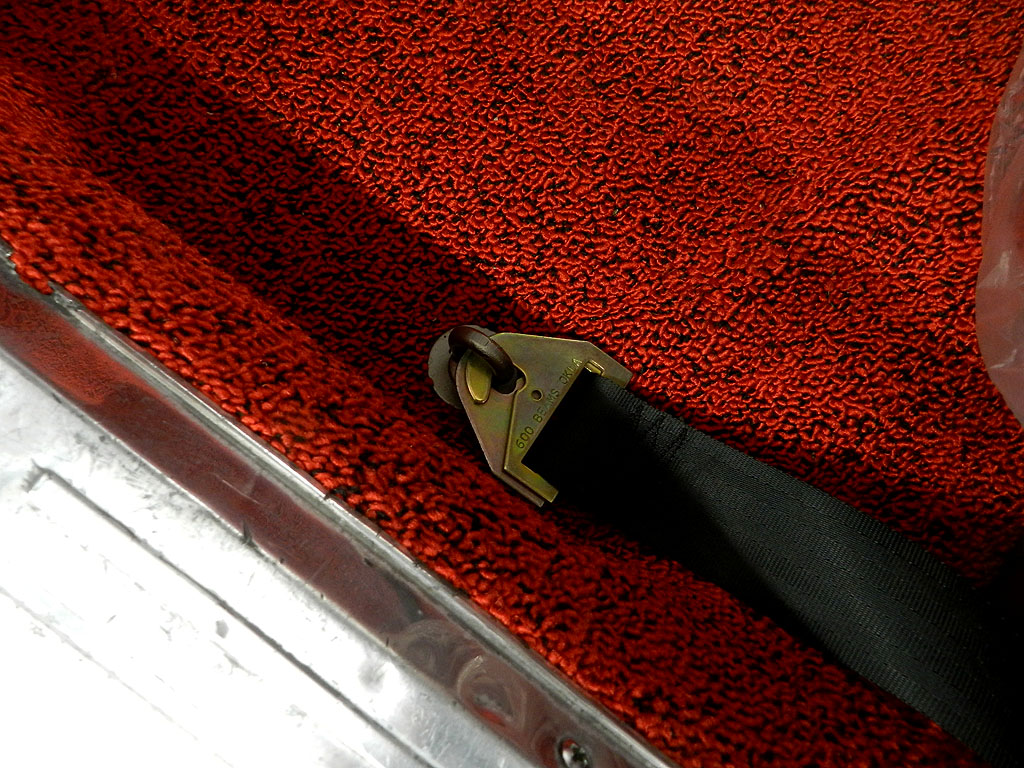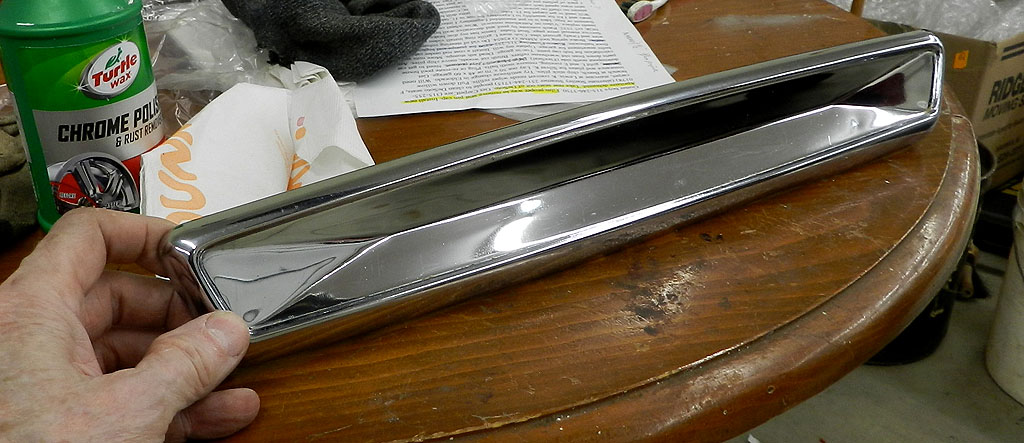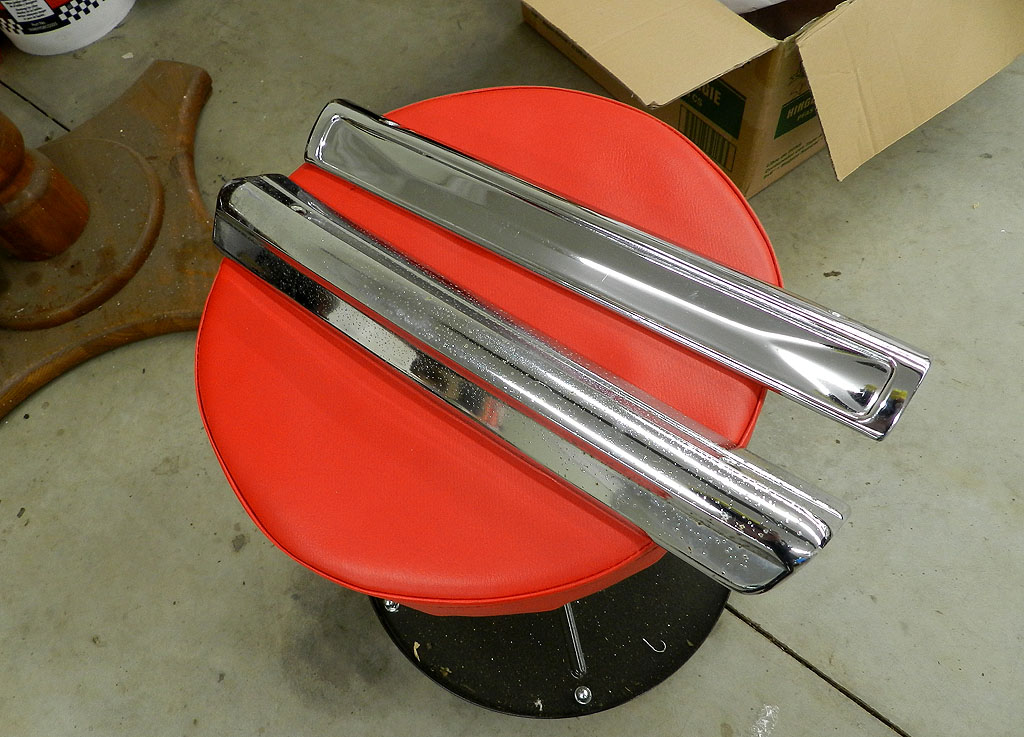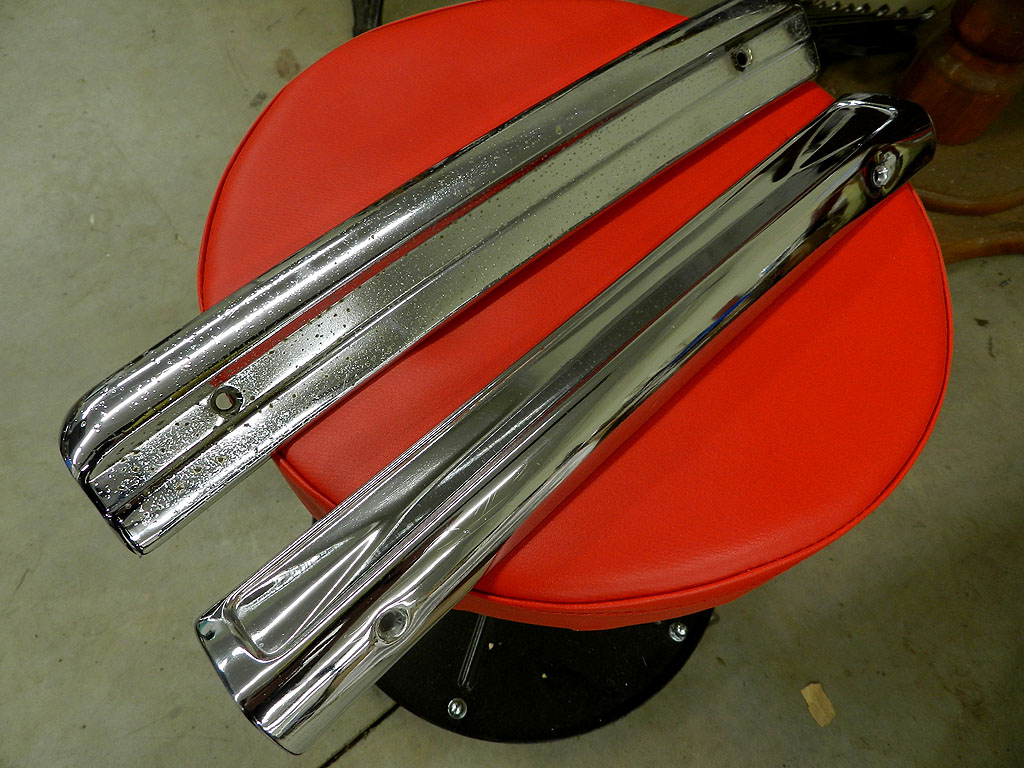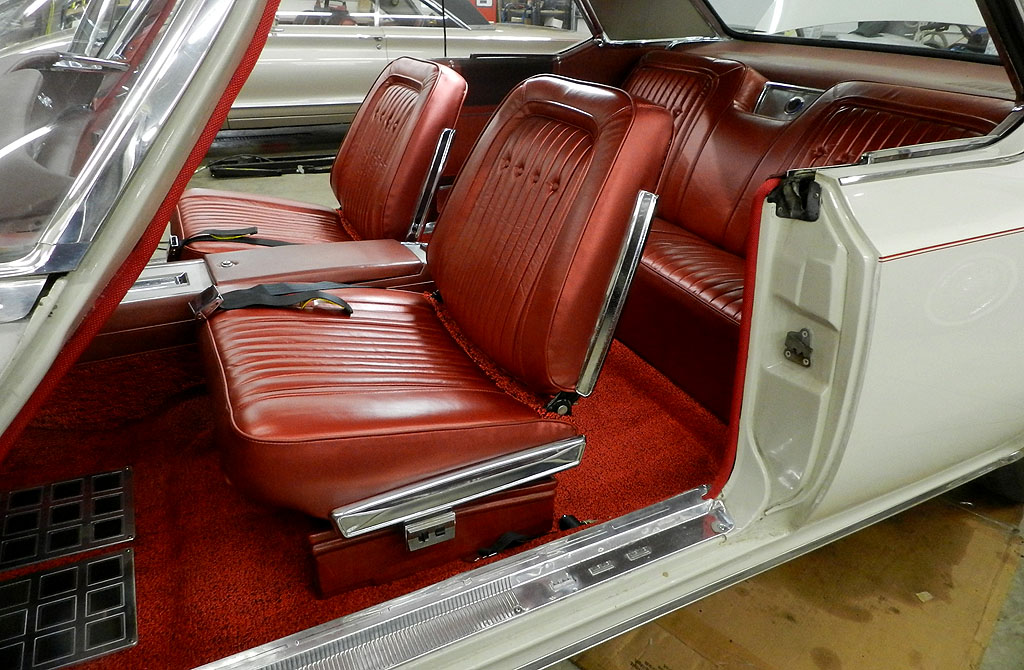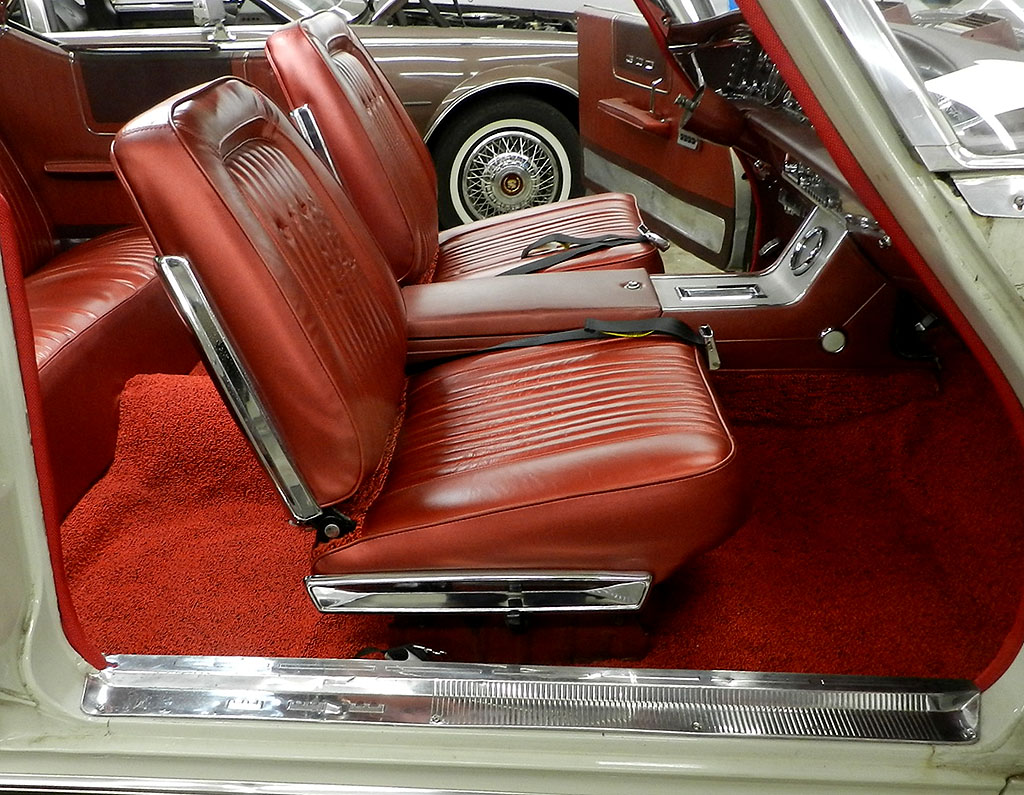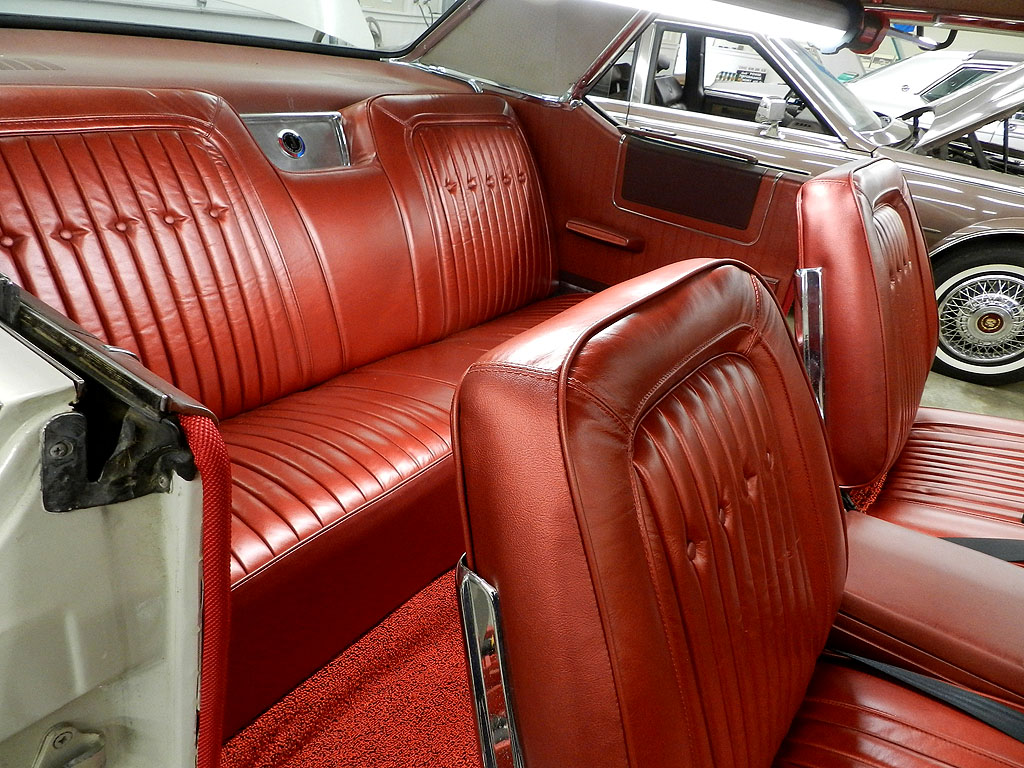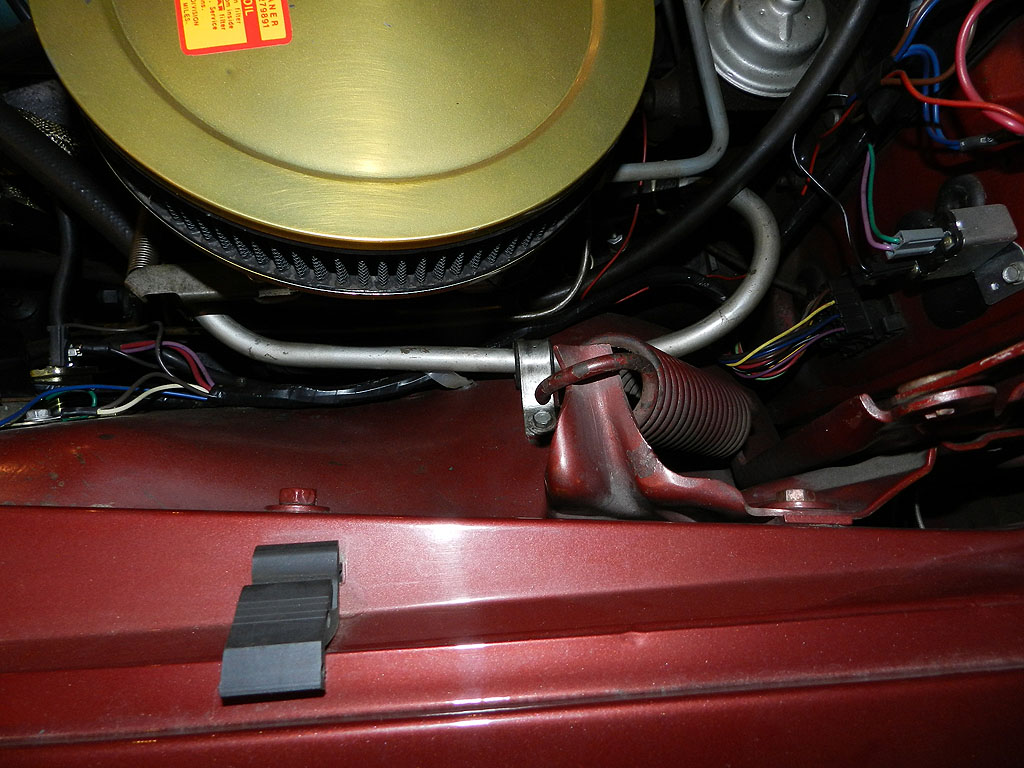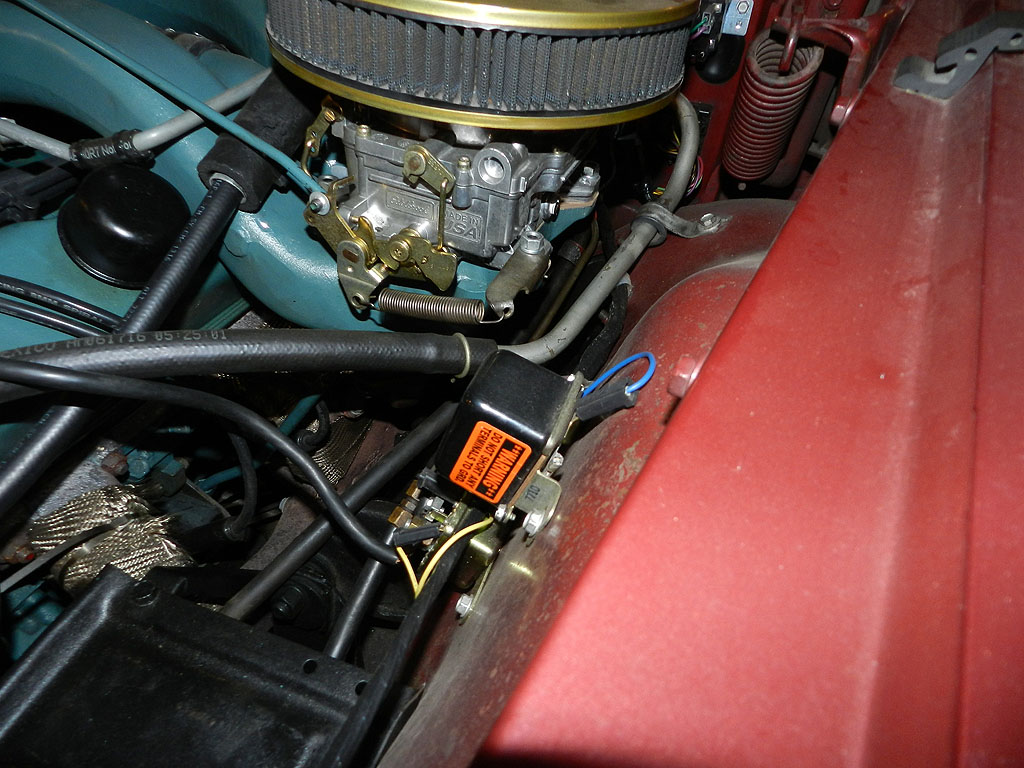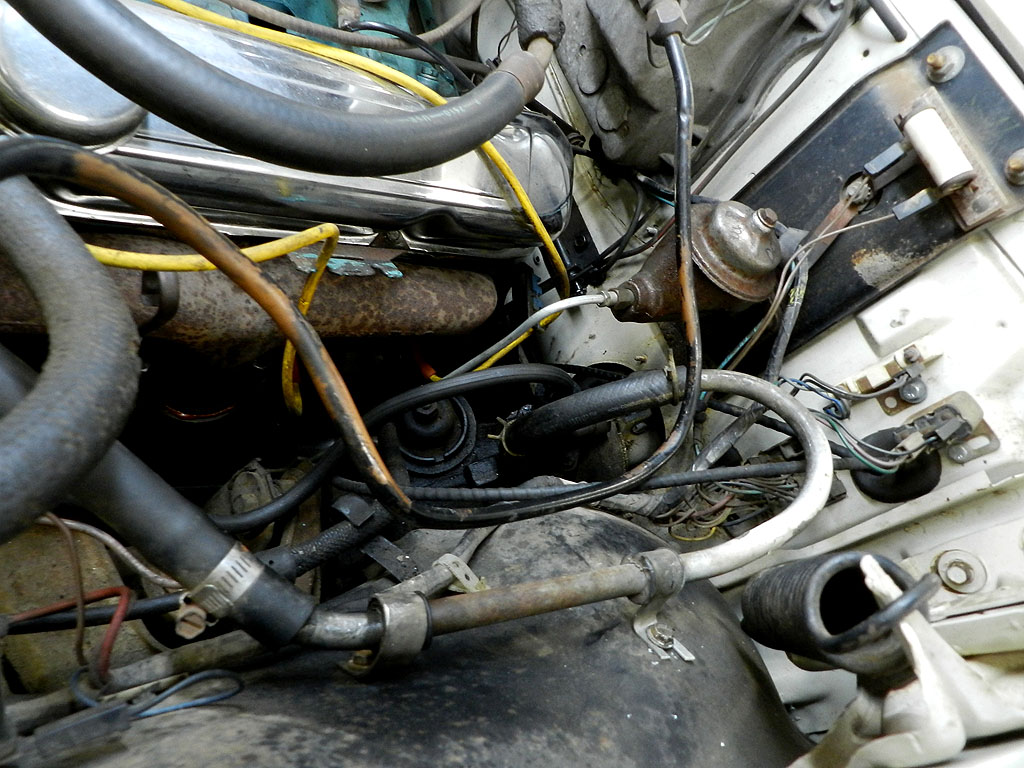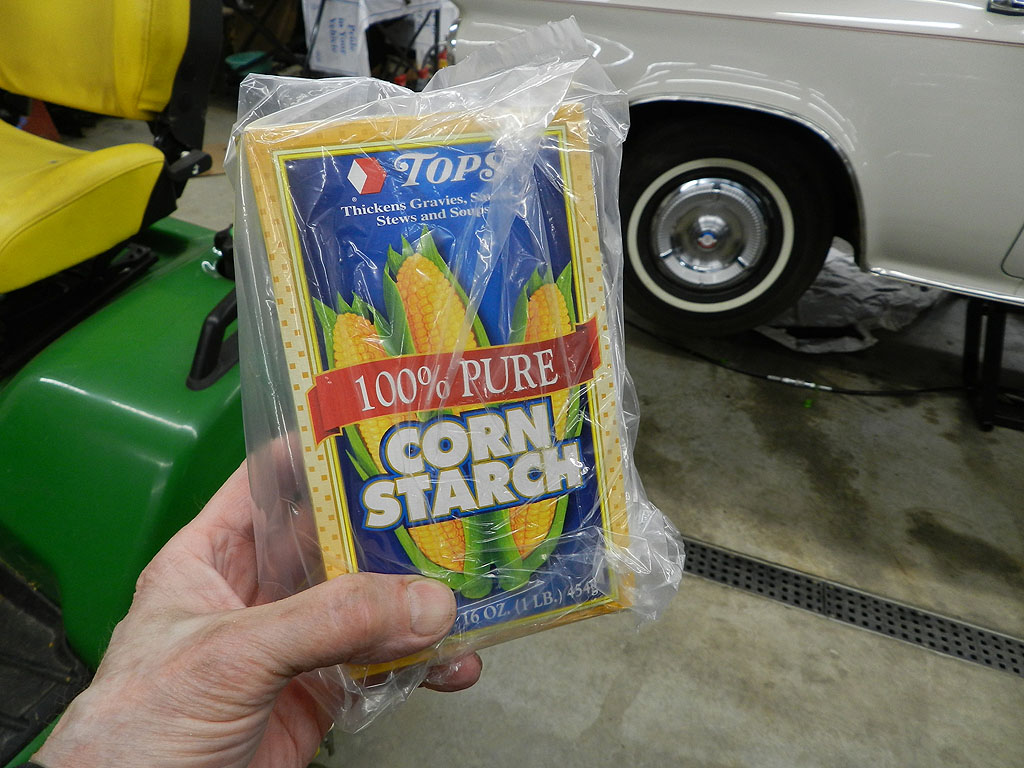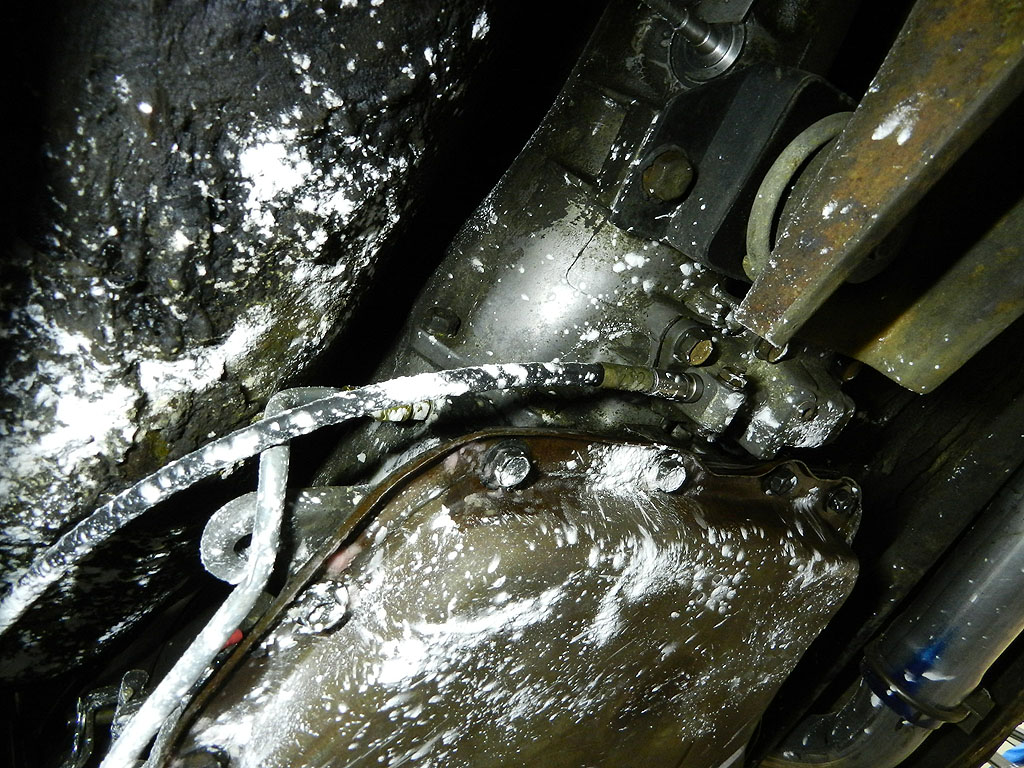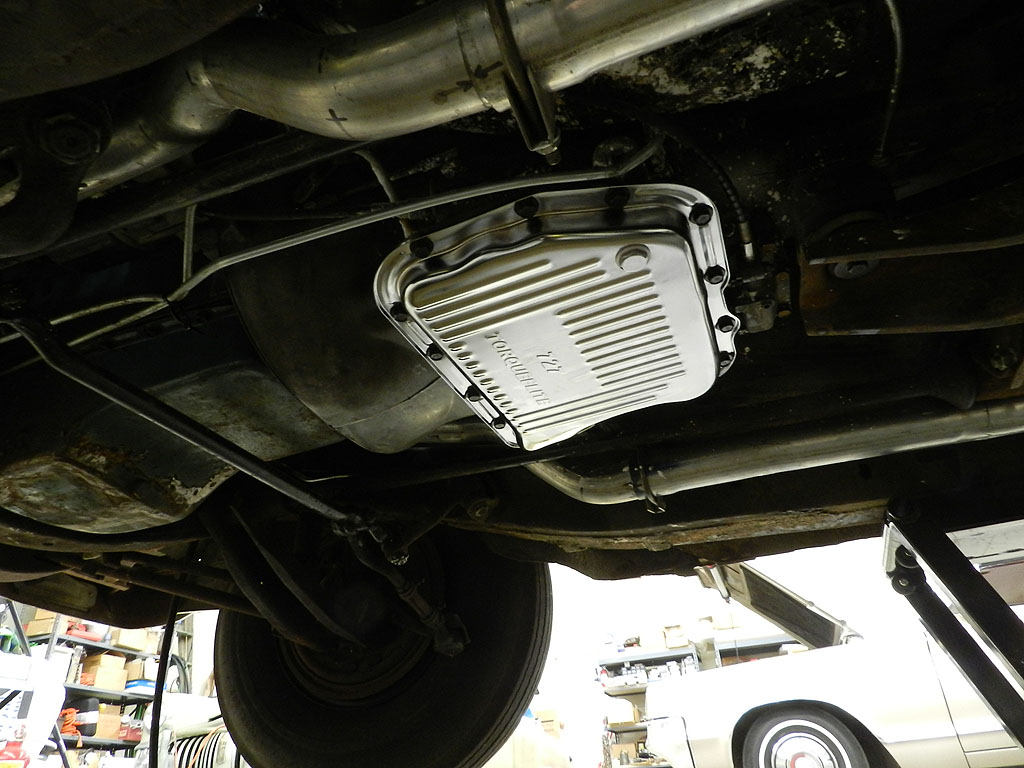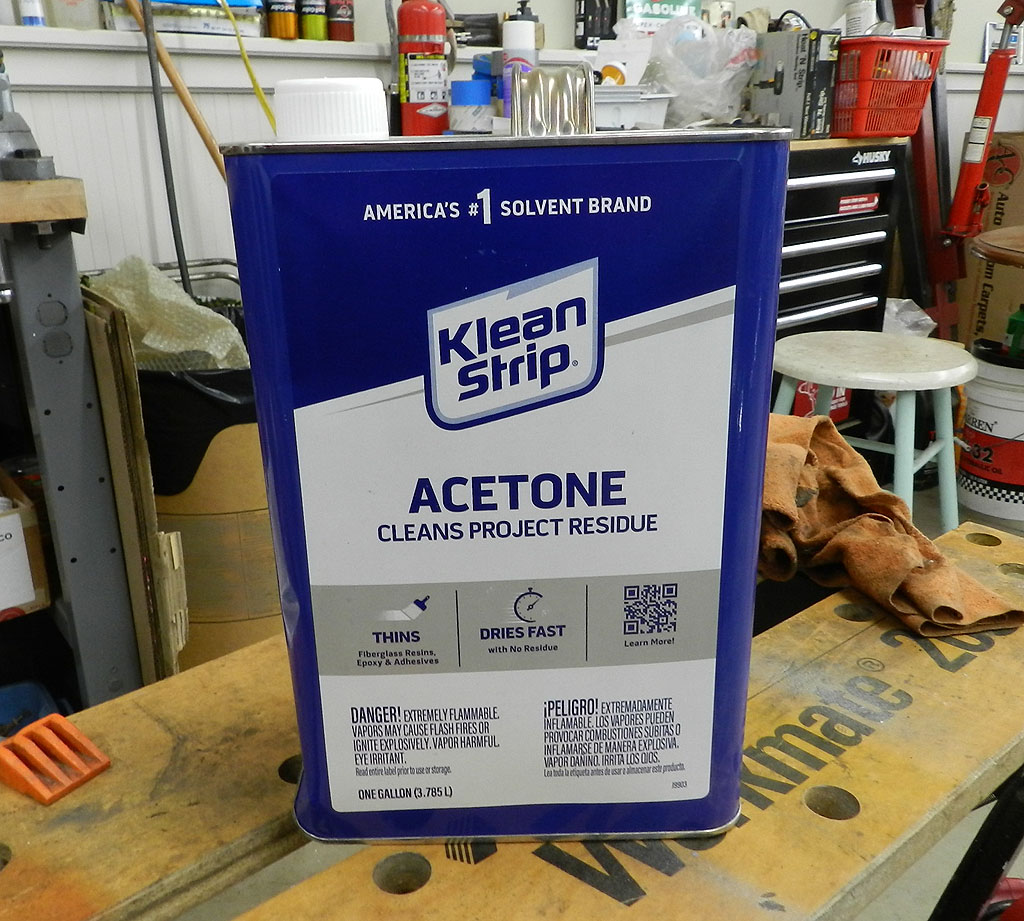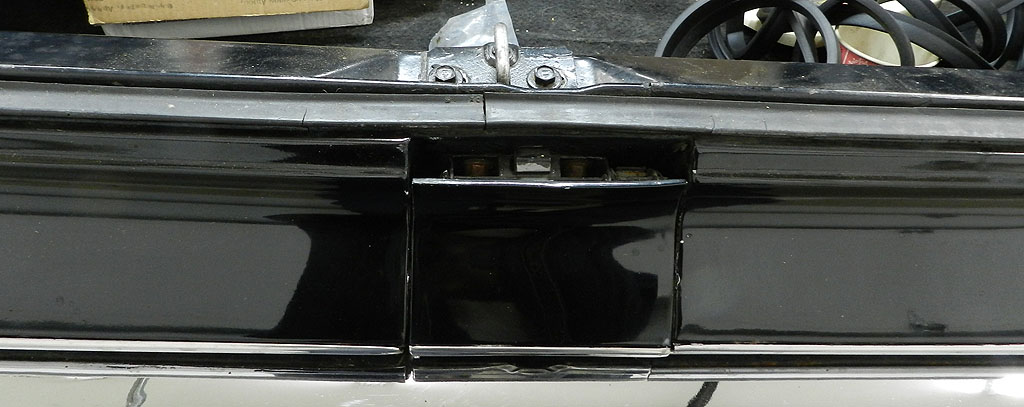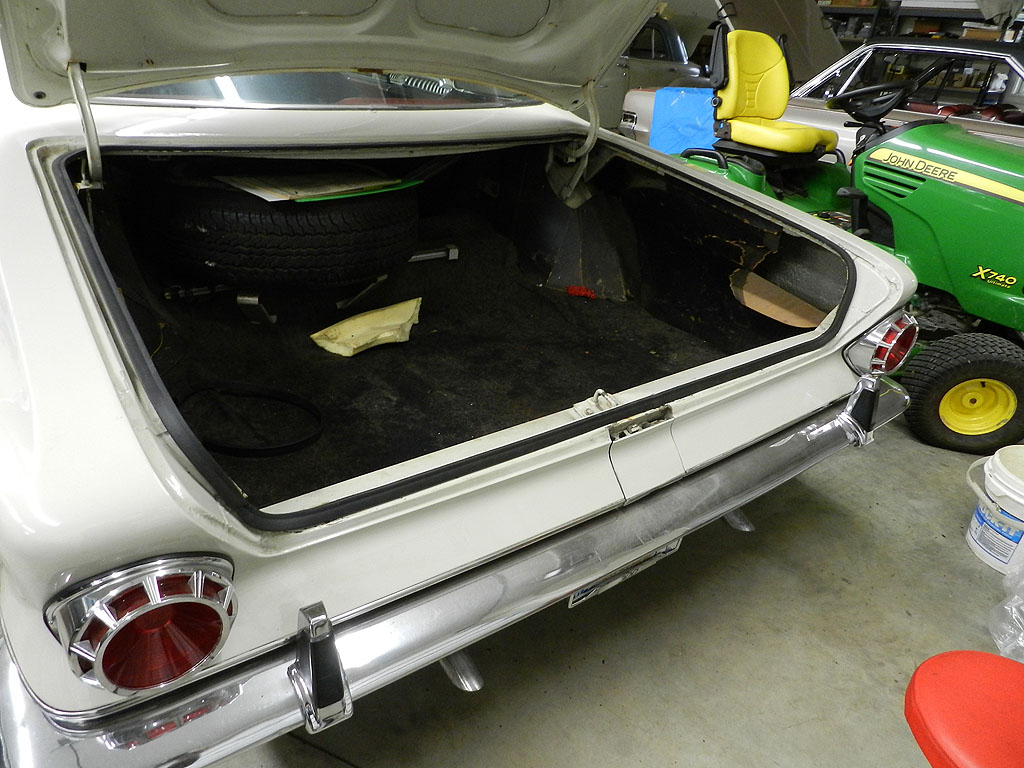Something I never noticed, the power steering return line on some Js and Ram Ks has a unique routing. This car has it. The hose exits the steering box vertical and joins a solid steel pipe. This pipe makes a turn toward the front of the engine where it meets with another rubber hose. The steel section is secured to the inner fender with one or two mounts. This line was not secured so we took a minute to do it. The red ram K coupe from Buffalo has this steel pipe. The red ram K coupe from Florida, the grey ram K, the black J, and J3 do not. On those cars, the hose exists the box from a horizontal discharge pipe, routes toward the inner fender (and away from the exhaust header) and to the pump. I'd expect the steel line version is further away from exhaust heat and a better version.
There is a transmission leak to chase down. It was hard to determine the source(s) of the leak.
I could see fluid dripping from the edges of the pan, from the park cable, and from the shift cable.
I sprayed the area with brake clean and wiped dry. I applied corn starch (a white powder similar to
talc) and let it sit. The idea is you can see the fluid tracks in the white powder and follow the track
back to the source. I was delighted to find the park cable and the shift cables were dry. The source of the leak
appeared to be the pan. A close look at the pan showed minor damage-distortion. I hammered
those areas back into shape and the leak was reduced but not done. If these pans are not
almost perfectly flat, they will leak. I found a new pan on Ebay for less than $50. Rather than
try to hammer the old one flat, I bought the new pan (which has an additional benefit of having
a drain plug) and installed with a new gasket. The book says 150 inch pound for the pan bolts but
I went with 130. No leaks and it didn't squeeze out the gasket. I found the inspection plug was not tight on
the parking pawl housing; a slight leak there. A second set of eyes found the other leak -- it was brake
fluid from the master cylinder running down the firewall to the park cable. Here is a video of the transmission leak.
The trunk gasket was brittle and cracked. Quirey has the correct replacement profile. Their hint for best results is to wipe the new gasket with Acetone before install. Apparently there is a mold-release agent residue on the new gasket. It doesn't take much, just a quick wipe and you are ready to begin. I start at the far center, adhere that section to where the corners begin and let it set. This provides a solid anchor to make the turn. I did the left corner, let it set with a few clamps and then did the right corner. With the corners solid, it is an easy straight run to the downward curve. Stop before the curve, let the gasket get solid, then do one curve with lots of clamps. The lower corners also get the same, then
run to just off center to mate the ends. You might need to adjust the trunk lock if the new gasket sits higher.
To Page 10
